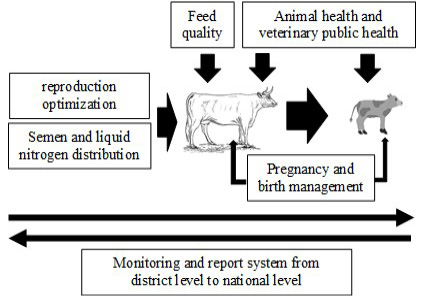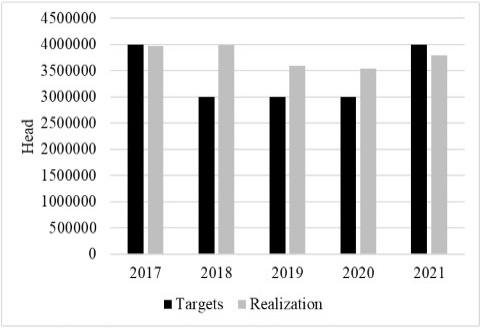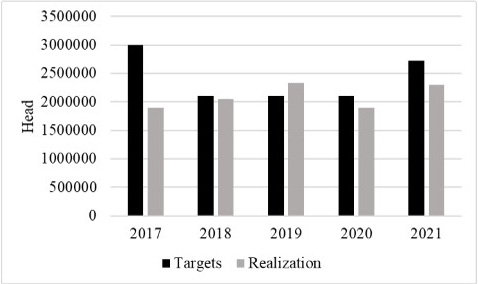Valuation of Massive Artificial Insemination Programs and the Economic Impact for Indonesia
Achmad Firman1*, Sondi Kuswaryan1, Lilis Nurlina1, Muhamad Hasan Hadiana1, Marina Sulistyati1, Unang Yunasaf1, Dwi Cipto Budinuryanto2, Iman Trisman3
1Department of Social Economic Livestock Development, Faculty of Animal Husbandry, Universitas Padjadjaran, Indonesia, Jl. Raya Bandung-Sumedang Km 21, Jatinangor, Sumedang 45363, West Java, Indonesia; 2Department of Livestock Production, Faculty of Animal Husbandry, Universitas Padjadjaran, Indonesia, Jl. Raya Bandung-Sumedang Km 21, Jatinangor, Sumedang 45363, West Java, Indonesia; 3Directorate General Livestock and Health, Ministry of Agriculture, Jl. Harsono RM. No. 3, Ragunan, Jakarta 12550, Indonesia.
*Correspondence | Achmad Firman, Department of Social Economic Livestock Development, Faculty of Animal Husbandry, Universitas Padjadjaran, Indonesia, Jl. Raya Bandung-Sumedang Km 21, Jatinangor, Sumedang 45363, West Java, Indonesia; Email: achmad.firman@unpad.ac.id
Figure 1:
Total population of Beef Cattle in Indonesia (head).
Source: Ministry of Agriculture, 2015-2022.
Figure 2:
The balance of beef supply and demand in Indonesia from 2015-2022.
Source: Ministry of Agriculture, 2015-2022.
Figure 3:
SIWAB/ SIKOMANDAN program.
Figure 4:
The performance indicator of frozen semen distribution.
Source: Indonesia Ministry of Agriculture, 2017-2022.
Figure 5:
The performance indicator of cow acceptors.
Source: Indonesia Ministry of Agriculture, 2017-2022.
Figure 6:
The performance indicator of cow pregnancy.
Source: Indonesia Ministry of Agriculture, 2017-2022.
Figure 7:
The performance indicator of calves born.
Source: Indonesia Ministry of Agriculture, 2017-2022.















